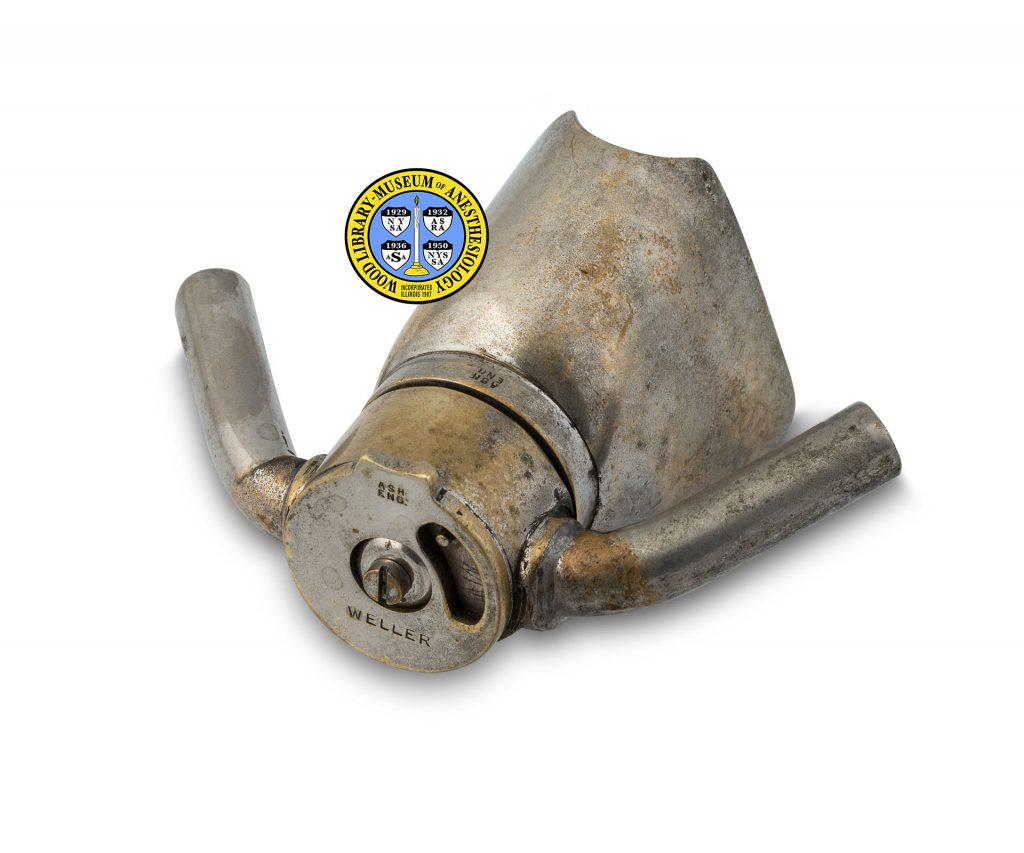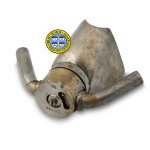Weller Aseptic Mask
In 1868, two decades after the introduction of nitrous oxide anesthesia, Chicago surgeon Edmund Andrews, M.D. (1824-1904) advocated the use of oxygen together with nitrous oxide for anesthesia. But it was not until the 1890s that apparatus was produced which could administer both nitrous oxide and oxygen.
A British inventor surnamed Weller, who is likely also to have been a dentist, is credited with several pieces of equipment marketed from the 1890s through the 1910s. These include masks, a stopcock and nitrous oxide-oxygen anesthesia apparatus. Each of these was similar to many other anesthesia apparatus available in that era. The London dental equipment manufacturer, Claudius Ash & Co. made several of these, including Weller's Aseptic Mask. It is thought that Weller's apparatus was a modification of Paterson's much better-known nasal anesthesia apparatus, which was also made by Ash & Co.
Weller's first masks were made of celluloid. This transparent material allowed the anesthesiologist to observe the patient's lips without lifting the mask, but it could not be sterilized. By 1915, Weller's all-metal aseptic mask was recommended, particularly "when tuberculous, syphilitic or other obviously septic persons are concerned."
Catalog Record: Weller Aseptic Mask Contact [email protected] for catalog record.


